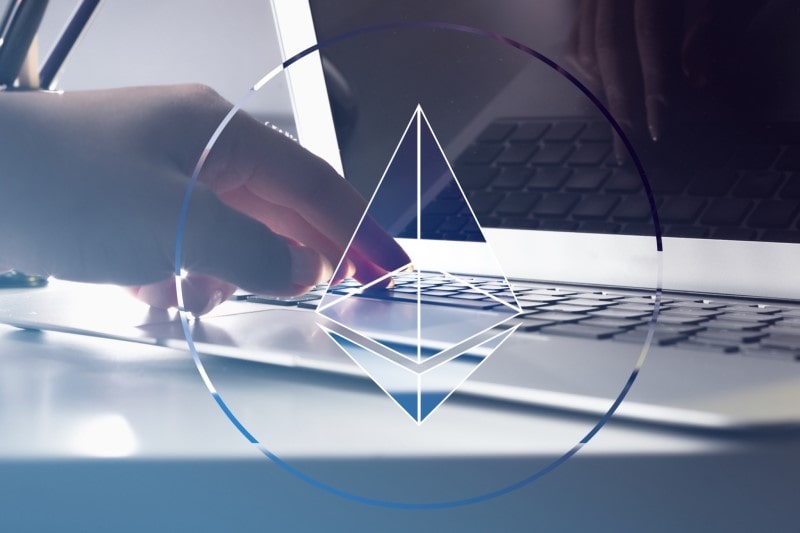Ethereum Blockchain

Introduction
Ethereum, like all other cryptocurrencies, is built on a blockchain . In a blockchain, all transactions are validated and recorded in a public, distributed ledger that is decentralized and dispersed. Cryptography is used in blockchains for the network to be secure and transactions to be verified. Computers solve complicated mathematical equations in order to “mine” new blocks of blockchain data, which are used to confirm each transaction. Participants get bitcoin tokens as a reward for participating. Ether is the name given to these tokens in the Ethereum system (ETH).
It wasn’t until 2015’s debut of the Ethereum network, which introduced an innovative technology that allowed anyone to construct their own digital currencies and self-sustaining, autonomous apps, that blockchains began to broaden their potential uses. Decentralized finance (Defi), initial coin offers (ICOs), game-based finance (GameFi), and non-fungible tokens were all made possible as a result of this breakthrough (NFTs).
Benefits of Using Ethereum in Your Projects
Broad, currently-established network. With Ethereum, “the advantages include a tried-and-true network that has been tested over years and millions and millions and millions of dollars worth of value moving hands,” adds Fromm. As a result, it has a massive worldwide following and the most extensive blockchain and cryptocurrency ecosystem.
A large number of features. Additionally, Ethereum may be used to perform other financial transactions, run smart contracts, and store data for third-party apps in addition to serving as a digital currency.
A never-ending stream of invention. There are a lot of Ethereum developers that are continuously searching for new methods to enhance the network and create new apps. According to Avital, decentralized apps based on Ethereum tend to be more popular than those based on other blockchains.
Avoids the need for middlemen. The decentralized network of Ethereum promises to free users from third-party intermediaries, such as attorneys who draft and interpret contracts, banks that function as go-betweens in financial transactions, and web hosting companies who host websites on their behalf.
The Ethereum Virtual Machine and the native Solidity programming language make it possible to construct decentralized apps on top of Ethereum. Smart contract developers on Ethereum benefited from the vast ecosystem of developer tools and defined best practices that have emerged with the protocol’s maturity. The ordinary Ethereum app user also benefits from this maturity since it improves the overall Ethereum application user experience. Connecting with the Ethereum blockchain via wallets like MetaMask, Argent, Rainbow, and more is possible. Decentralized apps like Defi and NFTs will continue to thrive on Ethereum because of its vast user base, which encourages developers to build their applications on the network. The backward-compatible Ethereum 2.0 protocol, which is presently being developed, will enable a scalable network for future decentralized applications that demand increased transaction throughput.
Bitcoin vs. Ethereum! What are the differences?
A virtual currency and a store of wealth are the major uses of Bitcoin. Ether may also be used as a medium of exchange and a means of storing wealth. Even yet, the Ethereum network’s decentralization allows for the creation and operation of apps and smart contracts. However, Bitcoin does not have these features. Despite its name, it is exclusively utilized as money and as a store of value.
Transactions are also processed more rapidly on Ethereum. “New blocks are verified on the Bitcoin network once every 10 minutes, but new blocks are validated on the Ethereum network once every 12 seconds,” explains Gary DeWaal, director of Katten’s Financial Markets and Regulation Group. Ethereum transactions might be sped up considerably further in the future.
Finally, there is no upper restriction on the number of possible Ethereum Blockchain tokens. In contrast, the total number of Bitcoin coins is limited to 21 million.
📌 Read more
To find out more about this topic, we recommend reading this article : Blockchain Loyalty,a New Revolution for Loyalty Programs

In terms of applications, how does Ethereum operate?
When a transaction triggers a smart contract, all nodes in the network execute all instructions. The Ethereum Virtual Machine is the execution environment Ethereum uses to do this (EVM). As part of the block verification protocol, every node on the network utilizes the EVM. Each node verifies a block by running the code triggered by the EVM transactions, which are enumerated in the block’s transactions. In order to maintain their ledgers in sync, all nodes on the network do identical computations. An agreed-upon charge and gas cap must be included in every transaction. The sender must agree to these conditions. It’s up to the miner to decide whether or not to charge a fee for a transaction. The transaction is completed if the total quantity of gas required is less than or equal to the gas limit. We might run into a problem if we run out of petrol before our transaction is complete. There will be no transaction, and the charge will still be lost. The sender gets compensated in Ether for any gas that isn’t consumed during the transaction’s execution. Transactions with gas limits above the estimations are safe to transmit.
What payment methods are available on Ethereum?
Ether may be used to pay for transactions. Both of these functions are served by ether. As a first step, it stops bad actors from clogging up the network by doing too many useless transactions. As a result, it encourages users to provide resources and verify transactions (mining). Ethereum transactions are a set of actions that must take place on the network to complete the transaction (i.e., a transfer of Ether from one account to another or a complex state-changing operation in a smart contract). The charge for each of these activities is measured in Ethereum’s gas. Gwei is a smaller unit of Ether used to quantify the cost of gas. A unit of ether is equal to 1,000,000,000 gwei (109)

Using Ethereum, how can I create a smart contract?
It is also possible to utilize transactions to upload smart contract code to the Ethereum blockchain. The function eth getTransactionReceipt, which returns the newly generated smart contract address after it is added to the blockchain, may be used to track the progress of a transaction. The address of the generated smart contract cannot be selected. They’re generated randomly using a hash function, so no one can forecast what they’ll be.
A hard fork in Ethereum Blockchain is a split in the code that results in a new version of the software.
To enhance the Ethereum Blockchain protocol, a hard fork is a modification to the underlying code that is not backward compatible. In order to avoid being stranded on an incompatible chain, all Ethereum clients must be updated.




